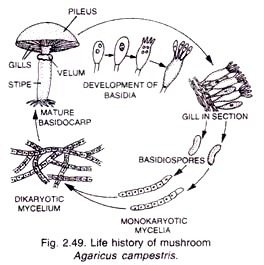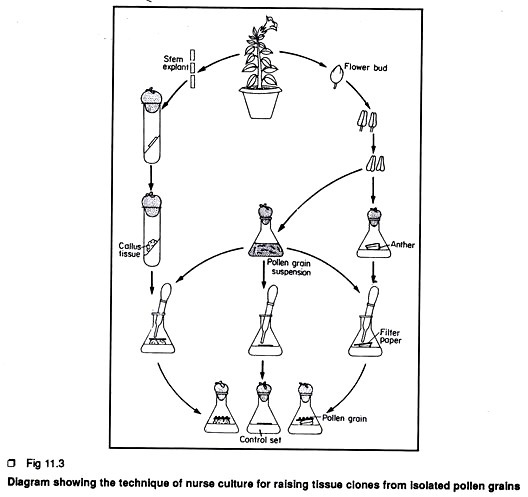Read this article to learn about the method of producing transgenic mouse.
The Transgenic Mouse:
It is designed to support investigators doing biology of aging research by creating mice that have been genetically altered by either inserting a new gene or removing a normal gene.
This method has become one of the most exciting approaches of discovering the functions and interactions of genes in mammals. At the University Of Washington, Nathan Shock Center, this transgenic technology is used to develop new animal models for studying genetic mechanisms of the aging process (Fig. 18.4).
During the previous year, transgenic mouse production has focused on constructs with enhanced defense against free radical injury in aging (e.g., catalase, superoxide dismutase, glutathione S-transferase), Werner Syndrome, adult onset diabetes, Alzheimer’s disease, thrombospondin, and rheumatoid arthritis in aging. Almost 4000 embryos, mainly of the C57BL/6 ingred strain, have been transferred, 498 pups analyzed and at least 40 contained the integrated construct.
In addition, this core concentrated an appreciable portion of effort into embryonal stem line (ES) methodologies for generation of knockouts and targeted ES transgenic. This included work to generate mouse models of Werner’s Syndrome, models for study of presenillin genes related to Alzheimer’s Disease and study of models of thrombospondin in aging. In the past year, a total of 396 embryos were transferred, and 79 pups were born, of which 37 were chimeric.
The isolation of mammalian genes is of utmost importance to the biology and medicine of aging because of the contributions these studies can make to the understanding of physiology and development. Techniques for introducing foreign genes into the mouse germ line provide novel approaches for modeling human genetic and chronic degenerative diseases. Since the initial report in 1980 describing transgenic mice, methods for the direct microinjection of DNA into the pro-nuclei of fertilized embryos have become established. Foreign genes can be incorporated into somatic germ-line tissues, with expression of these elements in the progeny of founder mice.
The creation of “transgenic” animals that make a specified gene product presents a spectrum of opportunities for basic studies in molecular pathogenesis and pre-clinical investigations applicable to a wide variety of medical problems of aging. An additional gene transfer technology developed in the 1980’s involved the use of stem cells from the early embryo, so-called embryonic stem (ES) cells. The capacity of ES cells to undergo differentiation makes them useful for investigating the effects of genetic modifications of either the gain of function or loss of function.
These pluripotent genetically modified ES cells can then be used to make mice with deleted genes (gene knockout) or targeted mutagenesis of genes thought to be involved in the aging process. It is also possible to develop lines of transgenic mice carrying very large DNA constructs (>600 kb) transected into ES cells. The University of Washington Aging Program provides a focused level of expertise and resources to enhance and facilitate the development of transgenic animal models using ES cell transfer technology.
Two methods of producing transgenic mice are widely used:
(1) Transforming embryonic stem cells (ES cells) growing in tissue culture with the desired DNA
(2) injecting the desired gene into the pro-nucleus of a fertilized mouse egg.
Method 1- The Embryonic Stem Cell Method:
Embryonic stem cells (ES cells) are harvested from the inner cell mass (ICM) of mouse blastocysts. They can be grown in culture and retain their full potential to produce all the cells of the mature animal, including its gametes.
1. Make your DNA-Using recombinant DNA methods, build molecules of DNA containing the structural gene you desire (e.g., the insulin gene), vector DNA to enable the molecules to be inserted into host DNA molecules, promoter and enhancer sequences to enable the gene to be expressed by host cells.
2. Transform ES cells in culture- Expose the cultured cells to the DNA so that some will incorporate it.
3. Select for successfully transformed cells.
4. Inject these cells into the inner cell mass (ICM) of mouse blastocysts.
5. Embryo transfer- Prepare a pseudo pregnant mouse (by mating a female mouse with a vasectomized male). The stimulus of mating elicits the hormonal changes needed to make her uterus receptive. Transfer the embryos into her uterus.
6. Test her offspring – Remove a small piece of tissue from the tail and examine its DNA for the desired gene. No more than 10-20% will have it, and they will be heterozygous for the gene.
7. Establish a transgenic strain – Mate two heterozygous mice and screen their offspring for the 1:4 that will be homozygous for the transgene. Mating these will found the transgenic strain.
Method 2 -The Pro-nucleus Method:
1. DNA is prepared as in Method 1.
2. Transform fertilized eggs – Freshly fertilized eggs are harvested before the sperm head has become a pro-nucleus. The male pro-nucleus is injected with DNA. When the pro-nuclei have fused to form the diploid zygote nucleus, the zygote is allowed to divide by mitosis to form a 2-cell embryo. The embryos is implanted in a pseudo pregnant foster mother and preceded as in Method 1.
The Figure 18.5 shows a transgenic mouse (right) with a normal littermate (left). The giant mouse developed from a fertilized egg transformed with a recombinant DNA molecule containing the structural gene for human growth hormone and a strong mouse gene promoter.
The levels of growth hormone in the serum of some of the transgenic mice were several hundred times higher than in control mice.
Random vs. Targeted Gene Insertion:
The early vectors used for gene insertion could, and did, place the gene (from one to 200 copies of it) anywhere in the genome. However, if you know some of the DNA sequence flanking a particular gene, it is possible to design vectors that replace that gene. The replacement gene can be one that (a) restores function in a mutant animal or (b) knocks out the function of a particular locus.
In either case, targeted gene insertion requires:
(1) The desired gene
(2) Neor, a gene that encodes an enzyme that inactivates the antibiotic neomycin and its relatives, like the drug G418, which is lethal to mammalian, cells
(3) Tk, a gene that encodes thymidine kinase, an enzyme that phosphorylates the nucleoside analog gancyclovir.
DNA polymerase fails to discriminate against the resulting nucleotide and inserts this nonfunctional nucleotide into freshly-replicating DNA. So ganciclovir kills cells that contain the tk gene. Knockout mice are valuable tools for discovering the function(s) of genes for which mutant strains were not previously available.
Two generalizations have emerged from examining knockout mice: Knockout mice are often surprisingly unaffected by their deficiency. Many genes turn out not to be indispensable. The mouse genome appears to have sufficient redundancy to compensate for a single missing pair of alleles. Most genes are pleiotropic. They are expressed in different tissues in different ways and at different times in development.
The Cre/loxP System:
One of the bacteriophages that infects E. coli, called PI, produces an enzyme — designated Cre — that cuts its DNA into lengths suitable for packaging into fresh virus particles. Cre cuts the viral DNA wherever it encounters a pair of sequences designated loxP. All the DNA between the two loxP sites is removed and the remaining DNA ligated together again (so the enzyme is a recombinase).
Using “Method 1” (above), mice can be made transgenic for the gene encoding Cre attached to a promoter that will be activated only when it is bound by the same transcription factors that urn on the other genes required for the unique function(s) of that type of cell; a “target” gene, the one whose function is to be studied, flanked by loxP sequences (Fig. 18.6).
In the adult animal, those cells that receive signals (e.g., the arrival of a hormone or cytokine) to turn on production of the transcription factors needed to activate the promoters of the genes whose products are needed by that particular kind of cell will also turn on transcription of the Cre gene. Its protein will then remove the “target” gene under study. All other cells will lack the transcription factors needed to bind to the Cre promoter (and/or any enhancers) so the target gene remains intact.
The result: a mouse with a particular gene knocked out in only certain cells. The CrdloxP system can also be used to remove DNA sequences that block gene transcription. In such a “knockin” mouse, the “target” gene is turned on in only certain cells.


